Lumbar Spondylolisthesis
Table of Contents
What is Lumbar Spondylolisthesis?
Lumbar Spondylolisthesis occurs when one of the lumbar vertebrae in the spine moves forward relative to the vertebrae below it, causing pain or weakness.
The most common area for spondylolisthesis to occur is within the bottom level of the lumbar spine between L5-S1. This slippage can lead to pressure on the spinal cord or nerve roots which can cause back pain as well as numbness and weakness in both legs.
There are different types of spondylolisthesis, but the most common form in the lumbar region is called isthmic spondylolisthesis. It typically develops due to a stress fracture in a small bridge of bone known as the pars interarticularis, which connects the upper and lower parts of a vertebra. This condition can result from repetitive trauma, certain sports activities, or congenital abnormalities.
Symptoms of lumbar spondylolisthesis can vary depending on the severity of the slippage and the compression of nerves.
Anatomy of Lumbar Spine:
Spondylolysthesis, regardless of the type, is most commonly preceded by spondylolysis. This pathology involves a fractured pars interarticularis of the lumbar vertebrae, also called the isthmus. This affects the supporting structural integrity of the vertebrae, which could lead to slippage of the corpus of the vertebrae, called spondylolisthesis. This, in turn, leads to one of the most obvious manifestations of lumbar instability. This slippage can occur in 2 directions: most commonly in anterior translation, called anterolisthesis, or a backward translation, called retrolisthesis.
Ligamentous structures, including the iliolumbar ligament, between L5 and the sacrum, are stronger than those between L4 and L5, by which the vertebral slip commonly develops in L4.
CLASSIFICATIONS OF SPONDYLOLISTHESIS
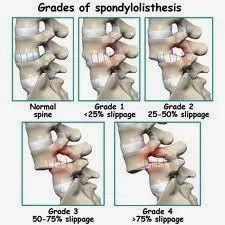
Congenital spondylolisthesis: Congenital means “present at birth.” Congenital spondylolisthesis is the result of abnormal bone formation. In this case, the abnormal arrangement of the vertebrae puts them at greater risk for slipping.
Isthmic spondylolisthesis: This type occurs as the result of spondylolysis, a condition that leads to small stress fractures (breaks) in the vertebrae. In some cases, the fractures weaken the bone so much that it slips out of place.
Degenerative spondylolisthesis: This is the most common form of the disorder. With aging, the discs — the cushions between the vertebral bones — lose water, becoming less spongy and less able to resist movement by the vertebrae.
Traumatic spondylolisthesis, in which an injury leads to a spinal fracture or slippage.
Pathological spondylolisthesis, which happens when the spine is weakened by disease — such as osteoporosis — an infection, or tumor.
Post-surgical spondylolisthesis refers to slippage that occurs or becomes worse after spinal surgery.
Symptoms of Lumbar Spondylolisthesis:
Following are the most common symptoms are seen in Lumbar spondylolisthesis, these are:
- Lower back pain or buttock pain
- Pain that goes from the lower back down one or both legs (Sciatica Pain)
- Tingling Numbness or weakness in one or both legs
- Tight hamstring or leg muscles
- Difficulty walking
- Leg, back, or buttock pain when you bend over
- Difficulty controlling bladder function
- increased inward curve of the spine, known as lordosis
Causes of Lumbar Spondylolisthesis
A birth defect in a part of the vertebra – this can cause it to slip forward (dysplastic spondylolisthesis)
repetitive trauma to the spine – this results in a defect developing in the vertebra, which can cause it to slip; this is known as isthmic spondylolisthesis and is more common in athletes such as gymnasts and weightlifters
The joints of the vertebrae become worn and arthritic – this is known as degenerative spondylolisthesis and is more common in older people
A sudden injury or trauma to the spine – such as a fracture, which can result in the vertebra slipping forward (traumatic spondylolisthesis)
A bone abnormality – this could be caused by a tumour, for example (pathologic spondylolisthesis)
Diagnosis:
MRI and CT can show a slip, as well as narrowing (stenosis) or compressed nerves in the spinal canal.
The CT and MRI scans are usually obtained with the patient lying flat, however, sometimes a slip may only be obvious when standing or bending forwards. This is why your neurosurgeon or spinal surgeon will sometimes obtain flexion, extension, standing X-rays, and occasionally a CT myelogram.
Treatment:
Treatment options for lumbar spondylolisthesis depend on various factors, including the severity of symptoms, the degree of slippage, and the impact on nerve function. Non-surgical treatments may include:
- Rest and activity modification: Avoiding activities that worsen symptoms and taking rest can help alleviate pain.
- Physical therapy: Specific exercises and stretching routines can improve muscle strength, flexibility, and stability in the lumbar spine.
- Medications: Over-the-counter pain relievers or prescription medications may be used to manage pain and reduce inflammation.
- Epidural steroid injections: In some cases, corticosteroid injections into the epidural space around the affected nerve can provide temporary relief from pain and inflammation.
Surgery may be considered if conservative treatments do not provide adequate relief or if there is a progressive neurological deficit. Surgical options for lumbar spondylolisthesis typically involve decompressing the compressed nerves and stabilizing the spine through spinal fusion or other techniques.
Surgery:
Posterior and Transforaminal Lumbar Interbody Fusion
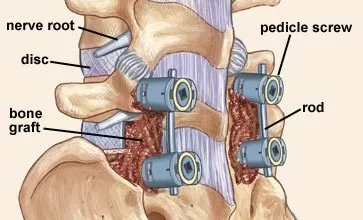
This type of spinal fusion surgery involves approaching the affected area through the lower back, although the surface area is limited when using this technique. Posterior transforaminal fusion is best used to treat localized spondylolisthesis located in the lower back.
As with other types of spinal fusion, surgeons place a piece of bone from the pelvis—or cadaver bone—between spinal bones and give them time to fuse to the spine. However, the rods or other fixation devices used must be small with this type of surgery due to the limited surface area.
Posterior Fusion:
During this type of spinal fusion surgery, your surgeon will approach the affected area from the back. A piece of your pelvic bone will be removed and placed between your slipped vertebrae, allowing them to fuse to the spine and form a stable piece of bone.
In some cases, cadaver bone will be used instead of, or in supplement to, you pelvic bone. It is up to your orthopedic surgeon’s preference, so be sure to discuss your options and comfort level with your surgeon. In some cases, screws and rods are inserted to hold the bones together until they fuse.
Physiotherapy Treatment in Lumbar Spondylolisthesis:
SWD (Short wave diathermy) is given for pain relief.
TENS (transcutaneous electrical nerve stimulation): A TENS machine stimulates your muscles through variable (but safe) intensities of electrical current. TENS helps reduce muscle spasms, and it may increase your body’s production of endorphins, your natural painkillers.
Heat and/or ice application :
Heat and/or ice application, to reduce localized pain. Generally, ice is recommended to relieve pain or discomfort directly after an activity that has caused the pain. Heat application is recommended to relax the muscles, and promote blood flow and a healing environment. See Heat and Cold Therapy Information Center.
EXERCISE THERAPY:
Transversus Abdominus
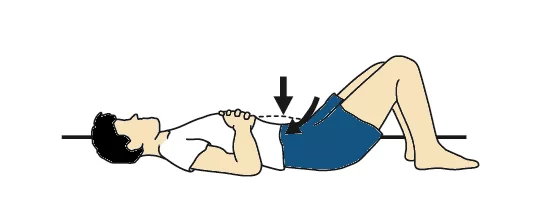
Slowly pull your belly button in “away from your belt line” and breathe normally. Your rib cage should remain relaxed and should not elevate during this process. You should be able to feel the muscle contracting if you press deeply 2cm in from the bony process at the front of your pelvis (figure 3). Practice holding this muscle at one-third of a maximal contraction for as long as possible during everyday activity (e.g. when walking etc.) provided it is pain-free. Repeat 3 times daily.
Pelvic tilt

Lie face up with your knees bent and feet flat on the ground.
Start by flattening your lower back against the ground, and engage your abdominal muscles to hold the position.
Hold for 15 seconds before relaxing.
Repeat 10 times.
Rotation in Lying
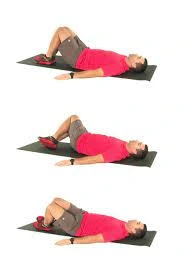
Begin this exercise lying on your back as demonstrated (figure 4). Slowly take your knees from side to side as far as you can go without pain and provided you feel no more than a mild to moderate stretch. Repeat 10 times provided
Double knee to chest
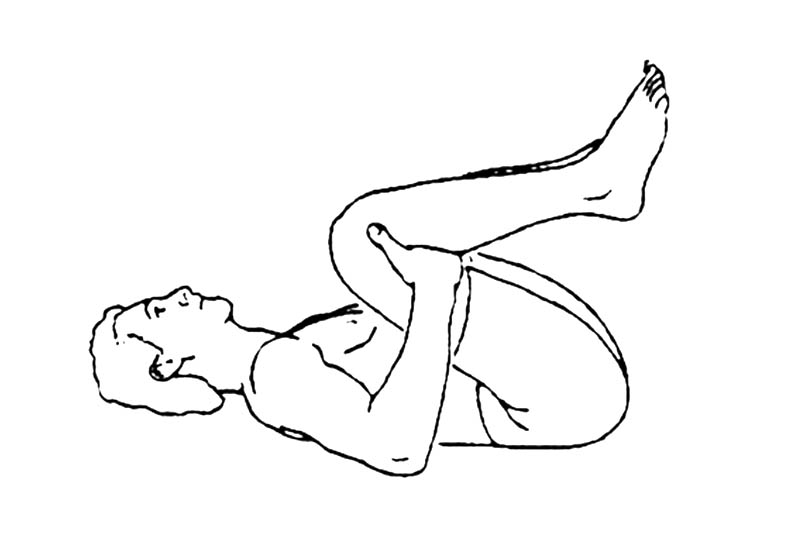
Start by lying face up with your knees bent and feet flat on the floor.
Engage your stomach muscles by drawing the belly button to the floor.
With the assistance of the hands, pull both knees up to the chest and hold for five seconds.
Relax and repeat 10 times.
Hamstring stretch :
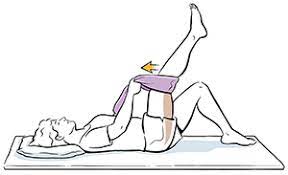
Lie on your back, with one leg bent at 45 degrees and your foot flat on the floor. Extend the other leg, placing the band or towel around the bottom of your foot. Hold the ends of the band with your hands. Begin the stretch by lifting the extended leg up toward the ceiling, and holding the ends of the band or towel. The stretch intensifies as your leg lifts higher. Continue the stretch by lowering the leg back down to the floor. Complete 10 to 15 repetitions, and repeat the exercise on the other leg.
Gluteal stretch:
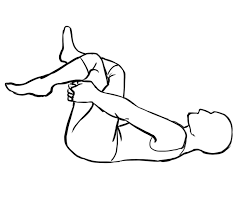
Lie on the back with both knees bent. Rest the ankle of one leg against the knee of the other. Grab onto the thigh of the bottom leg and pull it toward the chest until you feel a stretch in the buttocks and possibly the outer part of the hip. Hold this pose for 15 to 30 seconds before switching legs. These stretches for spondylolisthesis should be repeated three times for each leg.
Quadruped arm/leg raises:

For this back exercise for spondylolisthesis, begin on your hands and knees. Tighten the abdominals; while doing so, raise one arm and the opposite leg. Hold this pose for five seconds and then lower the leg and arm to the ground and repeat with the opposite arm and leg. Complete 10 repetitions on each side.
Bridging exercise

Lie on your back with both knees at about 90 degrees bent. Then push your feet onto the floor, squeeze or tighten your buttocks, and lift your hips off the floor until the shoulders, hips, and knees are all in a straight line. Hold for about 5 sec, and then slowly lower your hips back down to the floor and rest for up to TEN seconds. Repeat 10 times.
Standing arm exercise
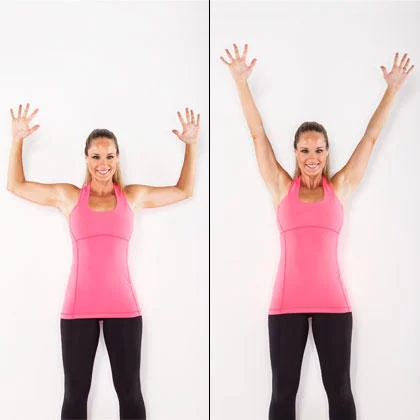
Stand against the wall with your back as flat against the wall as you can. Pull your pelvis backward to keep your lower back flat against the wall at all times throughout the exercise. Slowly raise your arms until they are straight in front of you and continue until they are directly overhead with the back of your hands touching the wall with your arms outstretched. Do not allow your back to arch. Your lower back should stay in contact with the wall at all times.
DO’S and DON’TS :
If your job requires sitting for long hours, sit only for a short period, taking breaks in between.
Place a supportive towel roll at the belt line of your back when sitting in a car.
Sleep on a good firm surface.
Keep your back straight when performing activities like vacuuming, sweeping, etc.
Keep your back and abdominal muscles strong to help support and stabilize the lower back.
Choose activities and sports that do not place your lower back at risk for injury. Swimming and biking are possible options.
Maintain a healthy weight. Excess weight puts added stress on your lower back.
Eat a well-balanced diet to keep your bones well-nourished and strong.
Heavy weightlifting: Weightlifting, especially if you use improper lifting techniques, can take a toll on your back in many ways. While lifting, you’re placing extra strain on your back, specifically on your lower or lumbar region. Read more about proper lifting techniques.
Twisting or bending: Although core exercises for spondylolisthesis can be vital in strengthening your abdominal muscles and your back, make sure to avoid those that involve excessive twisting to the side or bending over such as toe touches. This may cause further injury to your spine and cause additional pain.
High-impact activities: It’s important to remain active during your recovery process from spondylolisthesis, but it’s advised to stray away from those exercises that may cause harm to your back. Exercises such as running, basketball, football, etc. should be avoided until you’re healed.
Do not perform any exercises without the guidance of your therapist or your doctor as this can cause muscle sprain and do more harm than good.
Do not self-medicate yourself and do not neglect your medications and physiotherapy exercises.
Avoid too much movement and restrict your activities as much as possible till the inflammation undergoes healing.
Summary:
Lumbar spondylolisthesis is a condition where one vertebra in the lower back slips forward or backward in relation to the one below it. It can be caused by stress fractures or congenital abnormalities. Symptoms include lower back pain, radiating pain or numbness in the legs, hamstring tightness, and changes in gait. Diagnosis involves medical history, physical examination, and imaging tests.
Treatment for Lumbar spondylolisthesis is rest, physical therapy, medications, and, in severe cases, surgery. Consulting with a healthcare professional is important for an accurate diagnosis and appropriate treatment.

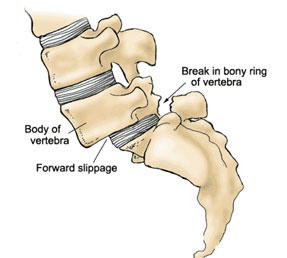
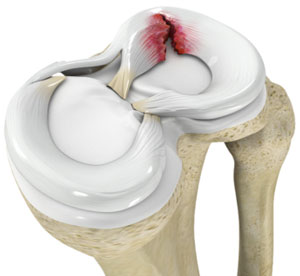


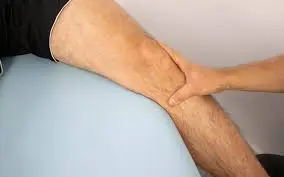
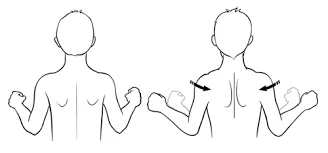
4 Comments